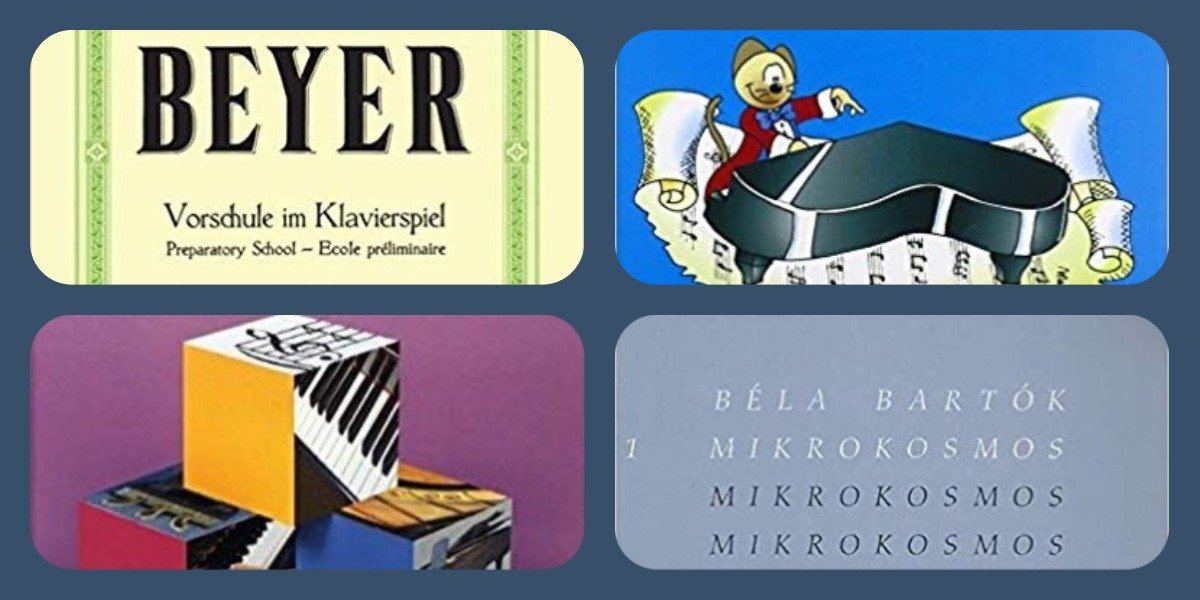Beyer’s Opus 101, the Bastien Method for piano study, the Musigatto and Bela Bartok’s Mikrokosmos are very popular methods for learning to play the piano. I analyzed their merits and demerits, here is what I found out by comparing the piano methods, Beyer vs Bastien vs Musigatto vs Mikrokosmos.
For beginning piano players, it is important to choose a method that is effective and orderly, but also challenging and fun. Unfortunately, the two do not always go hand in hand; beginning to play the piano involves a series of exercises to develop reading, coordination, and hand independence.
Beyer, Bastien, Musigatto, and Mikrokosmos are aimed at an audience of beginners who are just beginning to play the piano. However, these four methods have very different teaching approaches. Let us therefore analyze them one by one to discover their merits and flaws.
The oldest piano method: Beyer op.101
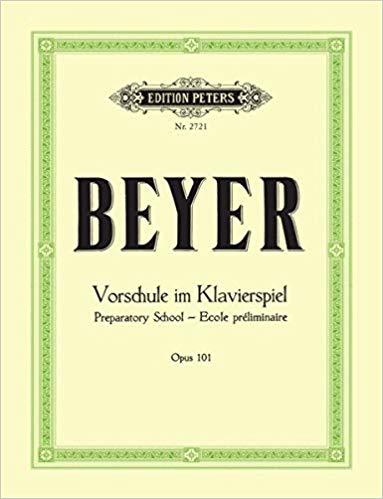
Beyer’s Opus 101 is certainly the most widely used of the four methods, and it is also the oldest. Ferdinand Beyer was a musician and teacher who lived in Germany around the mid-19th century; he was born in 1803 and died in 1863.
Beyer’s Opus 101 is a comprehensive method for the first year of piano study, usually it takes about twelve months to complete. Central to the author’s teaching thought is undoubtedly hand independence.
Rather than hastily introducing different elements, Beyer offers a series of very similar exercises through which the aspiring pianist learns to coordinate hands and become familiar with the keyboard and the score.
Beyer is very careful and methodical; for many exercises the hands remain in the same position, playing only the five notes C D E F G. Only from exercise 32 do the hands change position and begin to explore different areas of the keyboard. In this way the student learns to coordinate the movement of both hands and to associate the melodic lines he sees on the score with a specific finger movement.

Music reading is approached in a progressive way, such as using only the treble clef in the first half of the volume and introducing the bass clef only starting with exercise No. 54. Also in the second half of the volume Beyer introduces some new technical elements: scale technique, rebated notes, arpeggios, and chords.
In Beyer op.101, music theory comes in the background; it is through repetition of similar but progressively more difficult gestures that the student, almost without realizing it, makes progress and learns to play the piano.
Thus, the most negative aspect of Beyer is repetitiveness; to ensure the piano student’s regular and gradual progress study, the exercises are very similar to each other. In some cases Beyer’s study can therefore be a bit boring.
Let us see in summary what are the merits and drawbacks of Beyer op. 101.
Pros of Beyer’s op.101
- Beyer’s Opus 101 is an orderly, step-by-step method.
- It privileges mechanism and practice; you learn by doing, without special effort on theory
- It deals with different techniques of the piano
Cons of Beyer op.101
- The first part proceeds somewhat slowly
- It is a bulky method consisting of over a hundred exercises, which may discourage the beginner who has just started playing the piano
- The exercises are not particularly beautiful or appealing; the didactic aspect takes precedence over the aesthetic and artistic one
On this site you can find a piano video course for beginners, based precisely on Beyer’s Op. 101. It was the first course I published about two years ago and has been used profitably by hundreds of students.
We now turn to analyze the second collection of piano exercises: the Bastien Piano Basics.
Bastien Piano Basics

The authors of the Bastien Piano Basics are James Bastien and his wife Jane Smisor Bastien, two American musicians who passed away a few years ago after a life dedicated to music and teaching. The method was published around 1960 and is divided into several theory and piano booklets.
We will skip the theory fascicles here and consider the four properly piano fascicles of the Bastien Piano Basics. A first feature is the very attractive graphic approach, with drawings and exercise titles evidently aimed at children.
The student begins with both hands in C-G position, exactly as in Beyer op.101, but a first important difference is that the Bastien method also immediately introduces the bass clef.
For a child beginning to play, this almost certainly leads to focusing solely on the distances between notes and between fingers, developing the mechanism without actually beginning to read the score. Thus, wanting to use both keys from the beginning has the opposite effect: the student does not learn to read at all, but relies solely on fingerings and distances between notes.
Do you want my help to follow your child and teach him or her to play the piano? Find out how my piano lessons for children work.

From the earliest exercises, Bastien also introduces sharps and flats. This is a plus point of the Bastien Method for piano study, as the student learns to keep his hand inside the keyboard from the very beginning.
In fact, playing for a long time only on the white keys leads to a hand position away from the black keys, and this is a problem when you start playing on the whole chromatic scale.
After a few exercises, Bastien also introduces three-note chords. This is a serious mistake, as the hand of a child (but also of an adult beginner) are not yet ready to play chords after only a few weeks of practice. Even in the case of an already developed hand, playing the chord will inevitably lead to wrist and hand tension, leading to the acquisition of poor technique.
Although he hastily introduces chords almost from the very beginning, Bastien is very undemanding in terms of hand independence. Left and right hand parts are often alternating, or homorhythmic. The student does not learn to coordinate phrases that are rhythmically different, at least until the third fascicle.
Let us therefore summarize pros and cons of the Bastien method
Pros of the Bastien method
- Eye-catching graphic design, with cheerful and witty drawings and song titles
- It explores the keyboard from the beginning, using sharps and flats
- Short booklets are less challenging, help you measure your progress, and encourage you to keep going
Cons of the Bastien method
- Totally wrong technical approach, with chords played too early when the hand is still immature
- Premature use of both keys leads to favoring the mechanism without really learning to read the score
- Neglects hand independence, exercises are rhythmically too simple
Follow the link below to see an interview with Jane Smisor Bastien, a musician who has continued to teach music well into old age. While I have serious misgivings about the method she implemented with her husband, I cannot help but find it fascinating. Sadly, Jane Bastien passed away in 2015, some ten years after her husband. This is one of the last interviews she gave.
https://www.namm.org/library/oral-history/jane-bastien
Let us now go on to analyze the third piano method: the Musigatto by Maria Vacca.
The Musigatto by Maria Vacca, an Italian piano method
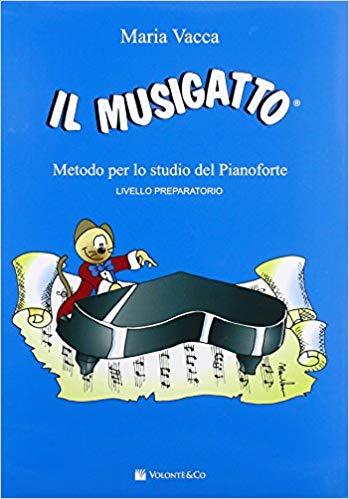
The Musigatto by Maria Vacca is clearly inspired by the Bastien Method for piano study. The method is quite popular in italy, partly because the book is given as a gift along with some keyboards.
Maria Vacca’s Musigatto is in every way similar to the Bastien Method for piano study, inheriting its friendliness and appealing graphics, but also its serious flaws. Several times it happened to me that my young students possessed a copy of the Musigatto and I therefore tried to employ it.
Unfortunately, the results have always been very poor. After a few weeks, it is essential to put other methods side by side because some of the exercises are too tiring, and at the same time the children do not learn to read music. The progression of the exercises is uneven. Also, just like the Bastien, the Musigatto introduces three-note chords and the bass clef too early.
Its main merit remains in its title, which is very nice and appreciated by children. Who systematically pick me up when I pretend to be wrong and call it musidog. Unfortunately, a really apt title is not enough when trying to teach piano playing.
I have searched in vain for news about the author Maria Vacca on the internet, I only found mention of a concert she gave a few years ago with her son. I believe she teaches at a conservatory in Calabria. Her Musigatto was a commercially successful operation, evidently Maria Vacca must have prioritized teaching over concert activity in her life.
Pros of Musigatto
- First of all: the title. Absolutely brilliant, impossible to forget once you hear it. Fun and catchy for children to approach music with joyfulness
- The graphic design and the very witty titles
- The booklets are short and not very “threatening.” Actually already in the first one there are some difficulties that are not easy to overcome.
Cons of Musigatto
- Incorrect technical approach, asking too much of a child’s or otherwise beginner’s hand
- Premature use of both keys does not help to really learn to read. In fact, all the children I proposed it to could only read by helping themselves with numbers
- Copies the Bastien method in many ways, but does not improve it in any way
(*) After this article was written, Musigatto author Maria Vacca called me to explain that the new editions of her method have partially corrected the errors pointed out here. Unfortunately, I have not had a chance to review the latest edition of the book, but when I do I may perhaps reevaluate what I have expressed here.
Now to the fourth and final review: that of Bela Bartok’s Mikrokosmos.
An alternative piano method: the Mikrokosmos by Bela Bartok
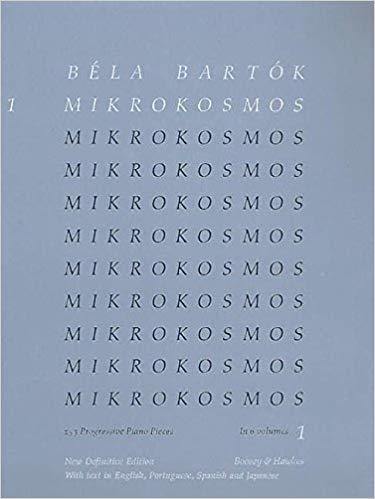
The Mikrokosmos is a six-volume work written by Hungarian composer Bela Bartok between 1926 and 1939. We consider here only the first two volumes, which can be used for beginning to play the piano. The Mikrokosmos differs from previous methods in several ways.
Bela Bartok was a composer of the highest order, a musician who cannot be compared to Beyer, Mr. and Mrs. Bastien or Maria Vacca, honest teachers who created interesting works from a didactic point of view but did not leave their mark on the history of music. Bela Bartok was a great of 20th-century music, and in his exercises, even elementary ones, the personality of the great composer often surfaces.
Bartok was a specialist in Eastern European folk music; many exercises in the Mikrokosmos use dissonant scales and unusual tempos, which are very interesting and fascinating. The Mikrokosmos is therefore much more beautiful than the previously mentioned works, however, its study presents a beginner with some difficulties.
The pieces are often dissonant, a bit uncanny. An ear not very educated in music may not understand the meaning and may not be able to tell whether it is playing the right notes or not. This is what often happens to children, for whom Mikrokosmos is therefore not recommended.
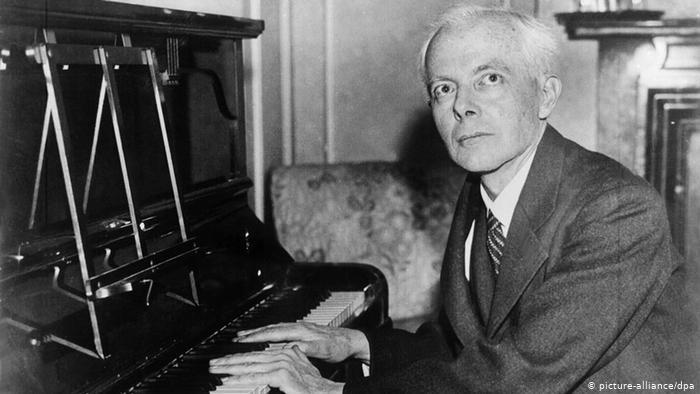
Un’altra difficoltà risiede nei cambi di posizione delle mani, che avvengono molto spesso fin dal principio e che possono disorientare un principiante. Iniziare a suonare il piano studiando il Mikrokosmos di Bartok può essere un’esperienza affascinante, ma di sicuro il metodo è più difficile dei precedenti. Ecco in sintesi pregi e difetti del Mikrokosmos di Bartok.
Pros of Mikrokosmos by Bela Bartok
The music is interesting and varied
The exercises use unusual scales, forcing the student to read music carefully
Behind this work is a great musician, and at times you can hear it
Cons of Mikrokosmos by Bela Bartok
- Exercises are often dissonant and unclear to an uneducated ear
- Difficulty of exercises increases abruptly, not gradually
- Hands often move from the very beginning
I recently completed the video course on Mikrokosmos volume one. It is not a course for everyone, but it can be an enjoyable diversion for those who have been studying for a year or two and are looking for new inspiration and challenges.
Final remarks: Beyer vs Bastien vs Musigatto vs Mikrokosmos
In conclusion, among these four methods there are two that are clearly superior: Beyer’s Opus 101 for its effectiveness and Bartok’s Mikrokosmos for the spark of genius that it contains. I recommend the former for the typical beginner, whether child or adult, and the latter for adult music-loving students who have an ear already trained in music.
Bartok’s Mikrokosmos may be the ideal method for people who already play another instrument and want to approach piano, or for people who are very fond of classical music and can grasp the subtleties of Bartok’s music.
Unfortunately, I have to advise against the Bastien method, which nevertheless had the merit in the 1960s of experimenting with a new teaching method and trying to approach even children in an engaging way. Music can and should be experienced as a game, for those who start playing the piano as children.
In the same way, I do not recommend Maria Vacca’s Musigatto, which by imitating the Bastien method, however, missed an opportunity to correct its obvious limitations. That of the Musigatto was a very successful commercial operation, but there is very little substance.
I therefore conclude this article with the ranking among these four methods: 1st ranked Beyer op.101, 2nd Bela Bartok’s Mikrokosmos, 3rd Bastien method, 4th Maria Vacca’s Il Musigatto. As usual I look forward to your comments, please write me your opinion below.

